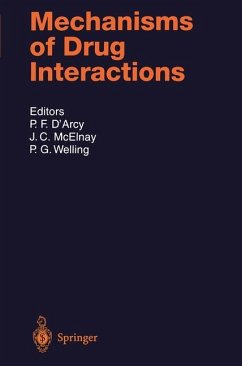Over the years a number of excellent books have classified and detailed drug drug interactions into their respective categories, e.g. interactions at plasma protein binding sites; those altering intestinal absorption or bioavailability; those involving hepatic metabolising enzymes; those involving competition or antagonism for receptor sites, and drug interactions modifying excretory mechanisms. Such books have presented extensive tables of interactions and their management. Although of considerable value to clinicians, such publica tions have not, however, been so expressive about the individual mechanisms that underlie these interactions. It is within this sphere of "mechanisms" that this present volume specialises. It deals with mechanisms of in vitro and in vivo, drug-drug, drug food and drug-herbals interactions and those that cause drugs to interfere with diagnostic laboratory tests. We believe that an explanation of the mechanisms of such interactions will enable practitioners to understand more fully the nature of the interactions and thus enable them to manage better their clinical outcome. If mechanisms of interactions are better understood, then it may be pos sible for the researcher to develop meaningful animal/biochemical/tissue cul ture or physicochemical models to which new molecules could be exposed during their development stages. The present position, which largely relies on patients experiencing adverse interactions before they can be established or documented, can hardly be regarded as satisfactory. This present volume is classified into two major parts; firstly, pharmacoki netic drug interactions and, secondly, pharmacodynamic drug interactions.
Hinweis: Dieser Artikel kann nur an eine deutsche Lieferadresse ausgeliefert werden.
Hinweis: Dieser Artikel kann nur an eine deutsche Lieferadresse ausgeliefert werden.
"The volume reflects the actual state-of-the-art and gives a good summary of what is currently known about drug interactions. The present volume is of interest not only to pharmacologists ... it should find a great number of interested readers among physicians." International Journal of Clinical Pharmacology, Therapy and Toxicology







